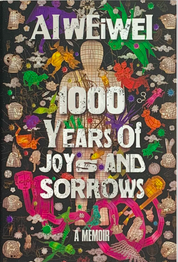Available courses
Japan’s trajectory from 1945-1989 is a critical chapter in understanding Japan in the world, yet it is one that is often skipped in a crowded curriculum. How did Japan reinvent itself after WWII and why is it important in the world today?
In 1945, Japan signed the WWII surrender as a defeated and disgraced nation. In 1989, Hirohito, the emperor who had led Japan into and beyond WWII, died. He left behind a new Japan that was respected and admired as a global economic and cultural leader. At pivotal years between 1945-1989, Japan faced challenges and pursued innovative directions that would reshape the nation and its relations with the world.
Designed for secondary history teachers, this short course will explore the period between 1945-1989 with an emphasis on case studies of key issues and events, primary source documents, and sample lessons.
- Instructor/Discussion Leader: Lynn Parisi

Ai Weiwei's 2020 memoir 1000 Years of Joys and Sorrows pays homage to his father Ai Qing, one of China's leading 20th century poets, at the same time providing critical social and historical context for both his father's and his careers as artists and sociopolitical commentators. The memoir is a fascinating and complex intertwining of narratives and perspectives on China from the early Mao years to the Xi Jinping Era, offering windows for instruction in social studies, art history, and world literature.
This 5-week asynchronous special topics course will focus on selected chapters in Ai Weiwei's memoir, combined with supplemental readings, to explore the political and social context of the father's and son's roles as voices of conscience for their generations.
- Instructor: cindyandlynn *
- Instructor: Lynn Parisi
In modern times, the U.S. and China have experienced a roller-coaster relationship, from WWII allies to Cold War enemies to wary trading partners. How have American idealism and realism molded U.S. policies and public opinion in shifting periods of cooperation and tension? This three-session series explores the many pivots in modern US-China relations from 1940 to the present, focusing on American perceptions, misperceptions, understandings, and misunderstandings as the two countries have navigated a complex relationship from their WWII alliance, through the Mao and Deng eras, up to the ambivalent relations of the Xi Jinping years. Participants will acquire an academic foundation for teaching U.S.-China relations past and present, current events, and global issues.
- Teacher: Lynn Parisi